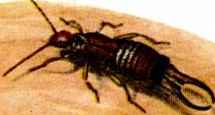Viscoelasticity Book Corrigenda
Viscoelastic Solids
CRC Press, 1998.
Rod Lakes
Here for example D is a capital Greek delta in Symbol font. If your browser does not have that font installed properly, it may look like a bold face D.This is a lower case Greek sigma: s.

Page 3, third equation, eta should be 1/eta.
Page 15. Sigma sub zero should be sigma (t).
Page 16. Equation after Eq. (2.2.4) D t to zero should be Dt to zero
Eq. (2.2.5) dt at right of equation.
Page 22, Eq. (2.5.1) add equals sign, s (t) =
In the expression to the far right, -R should be R. The final result is correct.
Page 26, Eq. (2.6.14) e s should be e (s) in last term of left side.Eq. (2.6.15) -E2/tau should be + E2/tau.
Page 30, Eq. (2.6.39) change K to c.
Page 44, a point of clarification. Eq. 2.12.3 is more general than Fung's QLV model andincludes it as a special case for which the shape of the relaxation curve is independent of strain.
Page 49, second line after Eq. (E2.3.6) change a viscoelastic to an elastic.
Page 53, equation after Eq. (E2.8.2) on the left, enclose the integrand in square brackets.
Page 58, top line, dJ(t' - 2t1) should be dJ(t').
Page 63, Eq. (3.2.1) add equals sign, s (t) =
Page 64, Eq. (3.2.2)Inside the integral, exp(i omega tau).
Page 70, Eq. (3.2.24) B (p/2 - d ) should be B sin (p/2 - d ).
Page 88, A2 just below the diagram has a - sign in the exponential.
Page 91, Eq. (3.7.10) change + to -
Page 94, Eq. (3.9.6) sin (wn t) should be sin (w nnt ).
Page 96, Example 3.2 line 1, E' + i E' should be E' + iE"
Page 97, Eq. (E3.3.3) p A/B should bep A/B cos d)
Page 99, fourth equation, change sin 2 dto sin 2d / cos d
Page 105, Eq. (E3.11.1) change J0toJ0"
Page 121 Fourth line after third equation, G" should be E"
Page 123 Next to last equation, G' should be E'
Page 124 First equation, Ge should be Ee
Page 129 Top equation, A should be in the numerator. In second and third equations, add A in the numerator of the right hand side.
Page 131 Eq. (E4.3.1), Ge should be Ee. At the bottom, if you prefer more significant figures, replace 0.05 with 0.0477
Page 132 Fig. E4.3, Ge should be Ee. In all of these one can refer to shear (G) or tension (E). The change is for consistency.
Page 135 Fifth equation number from top, left hand side of the equation should be J" instead of dJ'(omega)/d omega.
Page 140, third equation in set below (5.2.3) B should be E.
Page 141 Fig. 5.1, the horizontal axis is the x axis. In the text, (1) should be (a), (ii) should be (b) and (iii) should be (c) for consistency.
Page 142 The integrals in Eq. (5.3.3) and (5.3.4) are double integrals.
Page 146 The three equations below Eq. (5.5.3) need a minus sign on the right.
Page 158 Eq. (5.7.20) x on the right should be z. In text below, z is perpendicular to the rod axis.
Page 170, in Eq. (E5.1.2), change the 2 in the denominator to 4. The 4 is correct in the subsequent development, and the final result is correct.
Page 177, Example 5.7, E E with (1 + 0.1 i) should be denoted E*
Page 178. In Example 5.8, second and third formulae xi, not the derivative of xi; lambda, not the derivative of lambda, since the derivatives are incorporated in the definition of xi via the cube of s. The final result is correct.
Page 179, next to last equation add e11 to end of right hand side.
Page 210, line 4, log time
Page 234, in Eq. (E6.9.3) and (E6.9.4) it is the log of the ratio rather than the ratio of the logs.
Page 239, reference 6.2.4 to Howard should be ed. R. Haward. Chapter 4.
Page 330, last paragraph,S1122 is less than 0
Page 335, Problem 8.5, effect should be effect of
Page 342, Paragraph 2, line 2, isotopic should be isotropic
Page 366, reference 9.2.1, add volume 29 to the J. Appl. Mech. citation.
Page 458, topexp(+ i omega t), reverse sign.
Many thanks to Professor Charles Bert of the University of Oklahoma, Dr. M. Lewis of Los Alamos Lab, K. Darvish of the University of Virginia; A. Aiyangar, B. Calcagno, R. Delgadillo, D. Kochmann, I. LaBarca, A. Singh of the University of Wisconsin for pointing some of these out.
A point of clarification. In equation (E2.2.3) with the limits in the right equation given in terms of t - T, one may write the limits on T explicitly as from infinity to zero.
A point of clarification. To proceed from Eq. (3.5.21) and (3.5.22), recognize that M/theta is a structural stiffness not a compliance so resonance corresponds to a minimum. For half maximum of the compliance peak, the square of the rigidity is four times the value at resonance. 

